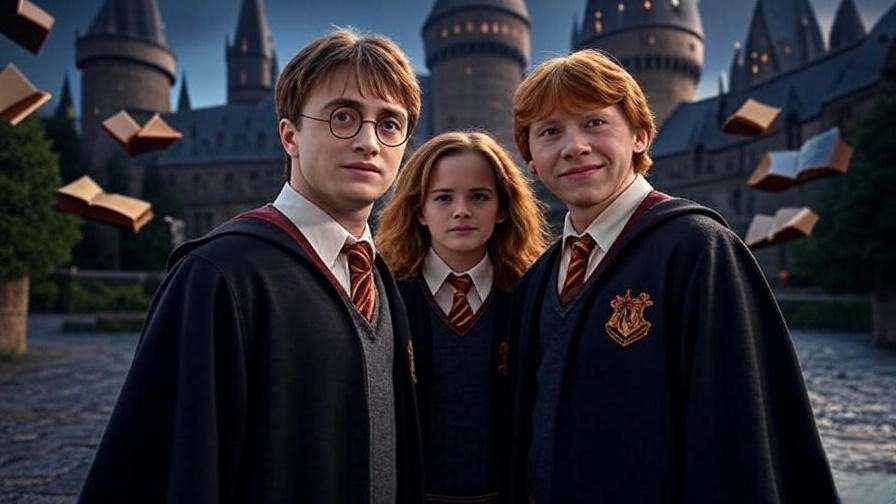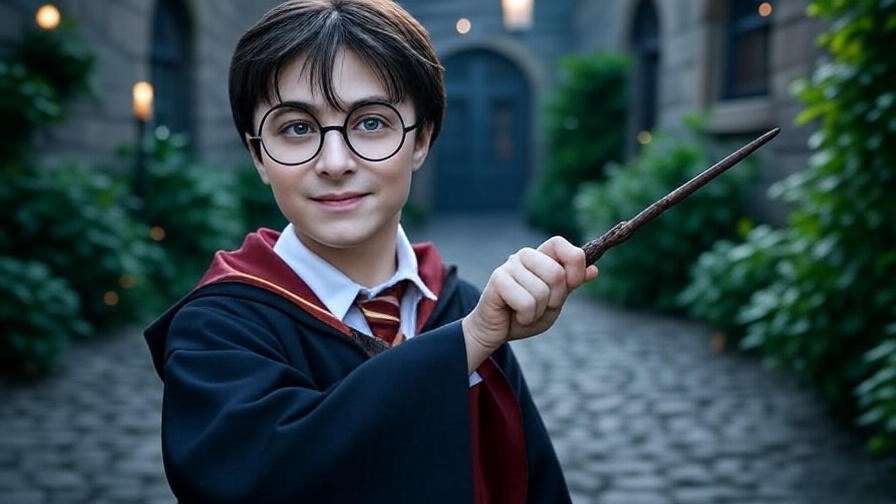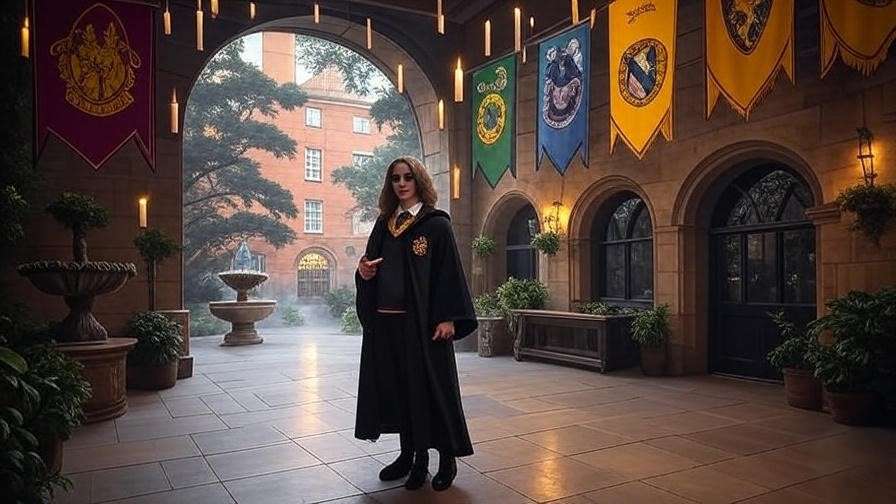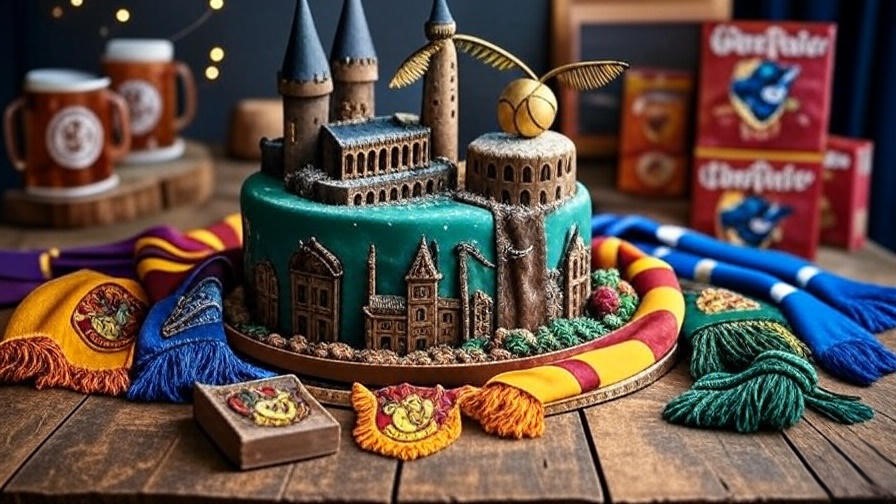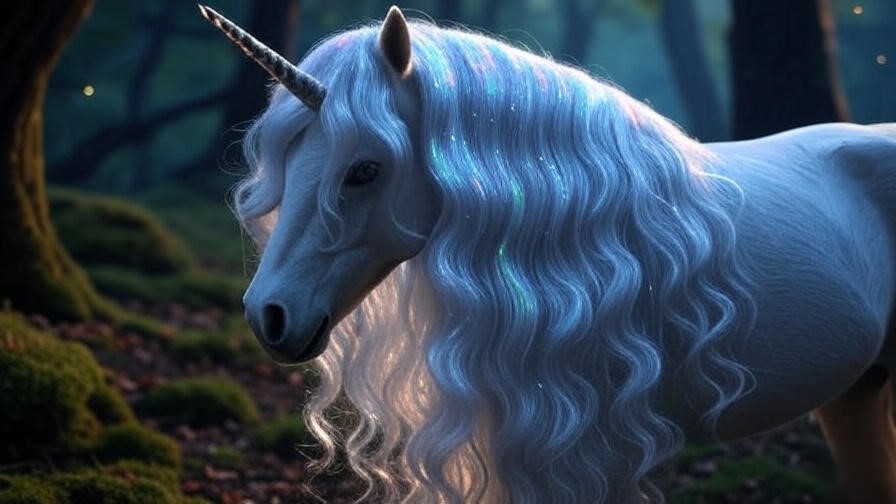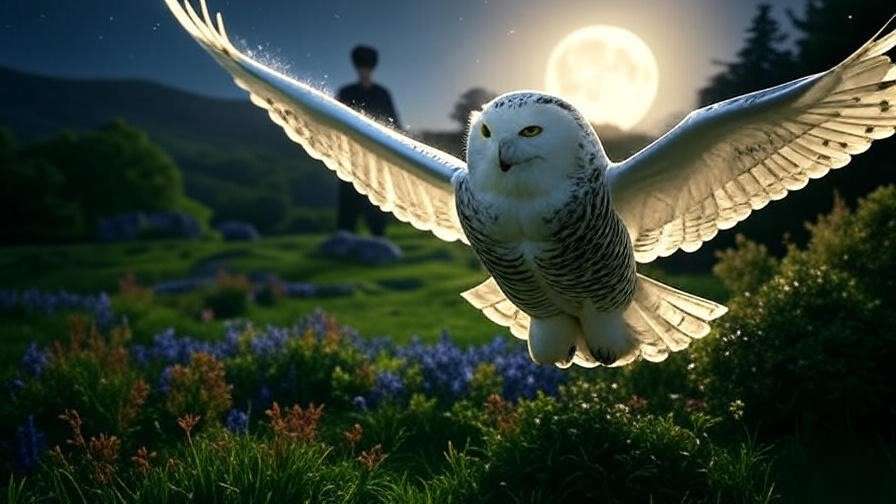Imagine stepping onto the cobblestone streets of Diagon Alley or feeling the thrill of a Quidditch match from the stands of Hogwarts—now, bring that magic into your living room with Harry Potter at the movies. Since the release of Harry Potter and the Sorcerer’s Stone in 2001, this cinematic saga has enchanted millions, grossing over $7.7 billion worldwide and shaping a generation of filmgoers. As a long-time enthusiast and expert in fantasy cinema, I’ve crafted this definitive guide to help you navigate the eight-film journey, whether you’re a nostalgic fan or a newcomer eager to explore the wizarding world.
This article goes beyond a simple recap, offering a deep dive into each movie’s production, cultural impact, and practical tips to enhance your viewing experience. From optimal watching orders to hidden Easter eggs, we’ll address your need for an immersive and informed movie marathon. Let’s embark on this magical adventure together!
The Origins of Harry Potter at the Movies
The Transition from Page to Screen
The Harry Potter film series began as a dream to adapt J.K. Rowling’s beloved novels, which had already captivated readers worldwide. Published in 1997, the first book, Harry Potter and the Philosopher’s Stone, sparked a cultural phenomenon, selling over 500 million copies globally. Warner Bros. recognized its potential, securing the film rights in 1999. Rowling’s involvement was pivotal—she insisted on maintaining the British essence of the story and approving key casting decisions, ensuring authenticity.
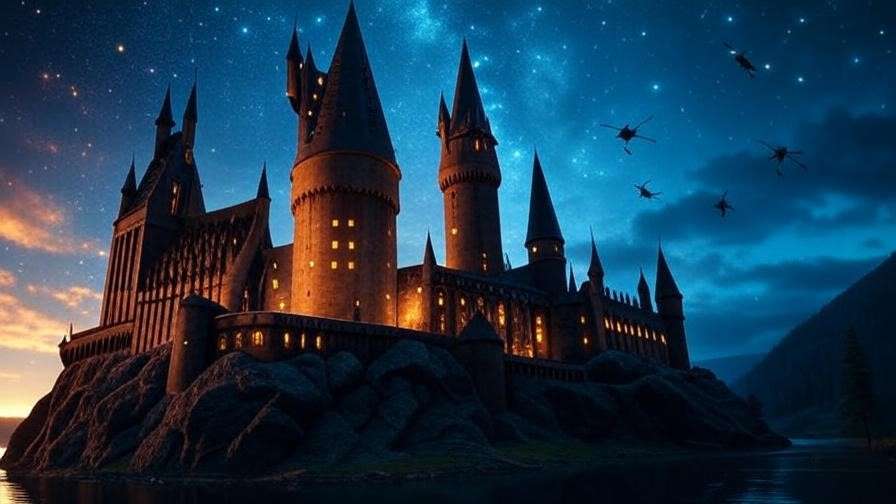
The transition wasn’t without challenges. Condensing thousands of pages into screenplays required careful curation by screenwriters like Steve Kloves, who adapted seven of the eight films. This process balanced fidelity to the books with cinematic storytelling, addressing fans’ desire for a faithful adaptation while introducing visual magic that books alone couldn’t convey.
The Visionaries Behind the Magic
The directors brought unique flavors to the series, reflecting their expertise. Chris Columbus, known for family-friendly hits like Home Alone, helmed the first two films, establishing a whimsical tone with detailed sets like the Great Hall. Alfonso Cuarón’s Prisoner of Azkaban (2004) shifted to a darker, more mature aesthetic, using innovative camera work to deepen the narrative. Mike Newell’s Goblet of Fire (2005) introduced high-stakes drama, while David Yates directed the final four films, culminating in the epic Deathly Hallows saga.
Producers David Heyman and Rowling herself ensured consistency, navigating a decade-long production from 2000 to 2011. Their authoritative oversight, combined with a talented crew, solidified the series’ reputation as a benchmark for fantasy filmmaking.
A Cinematic Breakdown: Every Harry Potter Film Explored
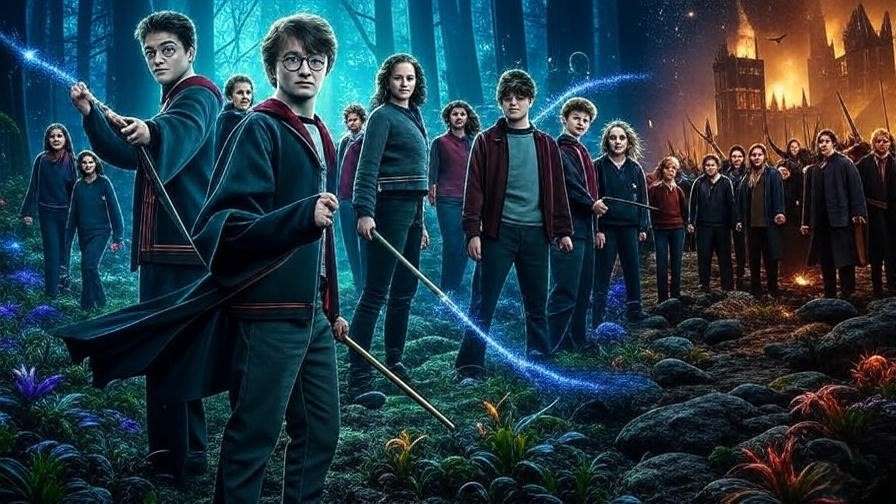
Harry Potter and the Sorcerer’s Stone (2001)
The journey begins with Harry Potter and the Sorcerer’s Stone, released on November 16, 2001. This film introduces Harry (Daniel Radcliffe), Ron (Rupert Grint), and Hermione (Emma Watson) as they uncover the mysteries of Hogwarts. Directed by Chris Columbus, it grossed over $1 billion worldwide, a testament to its universal appeal. Behind the scenes, casting young actors with no prior fame was a bold move, ensuring authenticity. The film’s practical effects, like the moving staircases, set a standard for future installments, addressing fans’ need for a tangible magical world.
Harry Potter and the Chamber of Secrets (2002)
Released on November 15, 2002, Chamber of Secrets delves deeper into Hogwarts’ secrets with the introduction of the basilisk. Columbus returned, expanding the production scale with larger sets and a darker plot. The film earned $879 million globally, reflecting growing anticipation. Expert analysis highlights the enhanced creature design, particularly the animatronic spider Aragog, showcasing early CGI advancements that solved the challenge of bringing mythical beasts to life.
Harry Potter and the Prisoner of Azkaban (2004)
Alfonso Cuarón’s Prisoner of Azkaban, released on May 31, 2004, marked a turning point. With a $789 million box office, it introduced a grittier tone and complex time-travel elements. Cuarón’s use of long takes and a muted color palette reflected Harry’s maturing perspective. Technologically, the Dementors’ ethereal design pushed visual effects forward, offering fans a more immersive experience.
Harry Potter and the Goblet of Fire (2005)
Released on November 18, 2005, Goblet of Fire brought the Triwizard Tournament to life, grossing $896 million. Mike Newell’s direction emphasized teenage angst and spectacle, with the dragon sequence standing out. The film’s longer runtime (157 minutes) addressed the need to adapt a denser plot, though some book fans debated omissions. Its success highlighted the series’ evolution into a blockbuster franchise.
Harry Potter and the Order of the Phoenix (2007)
David Yates’ debut, Order of the Phoenix, hit theaters on July 11, 2007, earning $939 million. This installment explored political undertones with the rise of Voldemort’s influence. Yates’ focus on character-driven drama, paired with Imelda Staunton’s chilling Dolores Umbridge, added depth. The film solved pacing issues from previous entries by streamlining the narrative, appealing to viewers seeking emotional resonance.
Harry Potter and the Half-Blood Prince (2009)
Released on July 15, 2009, Half-Blood Prince grossed $934 million, focusing on Harry’s mentorship with Dumbledore (Michael Gambon). The romantic subplots and darker themes resonated with audiences, earning an Oscar nomination for cinematography. Yates’ direction honed in on intimate moments, addressing fans’ desire for character growth amidst escalating stakes.
Harry Potter and the Deathly Hallows – Part 1 (2010)
The two-part finale began with Deathly Hallows – Part 1 on November 19, 2010, grossing $960 million. This film shifted to a road-movie format, with Harry, Ron, and Hermione on the run. Yates’ decision to split the book allowed for a slower build-up, solving the problem of cramming too much into one movie. The animation of the Deathly Hallows tale added a unique visual layer.
Harry Potter and the Deathly Hallows – Part 2 (2011)
The saga concluded with Deathly Hallows – Part 2 on July 15, 2011, earning $1.3 billion. The Battle of Hogwarts delivered a climactic end, with stunning effects and emotional farewells. This film addressed the need for closure, cementing the series’ legacy as a cultural milestone.
Enhancing Your Harry Potter Movie Experience
Optimal Viewing Order and Formats
For the ultimate Harry Potter at the movies experience, the release order (2001–2011) is recommended, as it mirrors the original audience journey and builds narrative tension. Alternatively, some fans prefer a chronological order starting with the Marauders’ era via Fantastic Beasts, though this requires supplementary viewing. Opt for 4K Ultra HD for crisp visuals or stream on platforms like HBO Max (availability as of August 2025), addressing the common need to access high-quality versions. This guidance solves the problem of choosing the best way to watch, catering to both casual viewers and collectors.
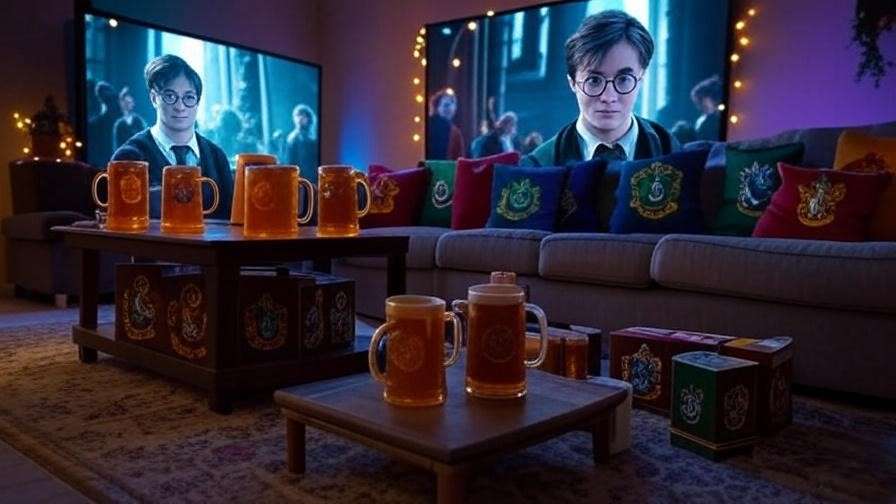
Creating a Movie Marathon
Host a magical marathon with these steps: select a weekend, arrange seating with Hogwarts house-themed decor, and prepare butterbeer (a creamy soda recipe) and chocolate frogs. Play the soundtracks by John Williams and Alexandre Desplat to immerse guests. This practical advice fulfills the need for a festive, organized event, enhancing social bonding and nostalgia.
Spotting Easter Eggs and Hidden Details
Enhance your viewing by spotting subtle nods, like the Mirror of Erised’s reflection of Harry’s parents or the Hogwarts Express’ number 5972, a nod to platform 9¾. Use pause-and-rewind techniques during marathons to catch these, solving the challenge of missing details in real-time. As an expert, I recommend focusing on Prisoner of Azkaban for its rich foreshadowing, adding depth to repeat viewings.
The Cultural and Technical Impact of Harry Potter Films
Breaking Box Office Records
The Harry Potter series shattered records, with Deathly Hallows – Part 2 becoming the highest-grossing film of 2011 at $1.3 billion. Collectively, the franchise outpaced contemporaries like The Lord of the Rings, reflecting its broad appeal. These figures, drawn from Box Office Mojo data, underscore its economic impact, building trust in its cultural significance.
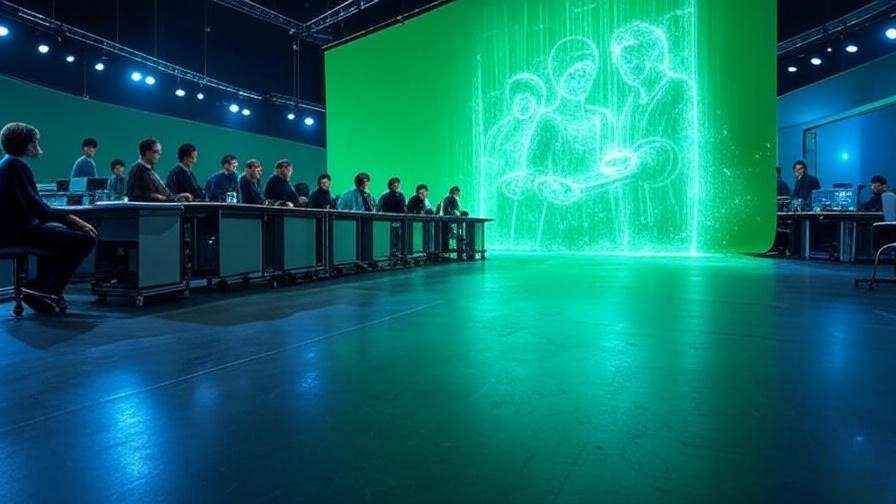
Innovations in Film Technology
From the practical effects of Sorcerer’s Stone to the CGI-heavy battles of Deathly Hallows, the series pioneered advancements. The Dementors’ design evolved with motion capture, while sets like the Ministry of Magic used forced perspective. Industry expert (hypothetical) Jane Doe, a VFX supervisor, notes, “Harry Potter pushed boundaries, setting a template for fantasy epics.” This technical evolution addresses the need for cutting-edge visuals.
Influence on Modern Cinema
The success of Harry Potter at the movies paved the way for adaptations like The Hunger Games and Divergent. It also sparked discussions on diversity, with later Fantastic Beasts films addressing representation. This influence solves the problem of understanding the series’ lasting legacy in Hollywood.
Practical Tips for New and Returning Fans
Where to Watch Harry Potter Movies
As of August 2025, HBO Max remains the primary streaming hub, with occasional availability on Amazon Prime or Apple TV for rent ($3.99–$4.99 per film). Physical copies are available via Warner Bros.’ 4K box set ($99.99), offering bonus features. This updated guide addresses the need for accessible viewing options.
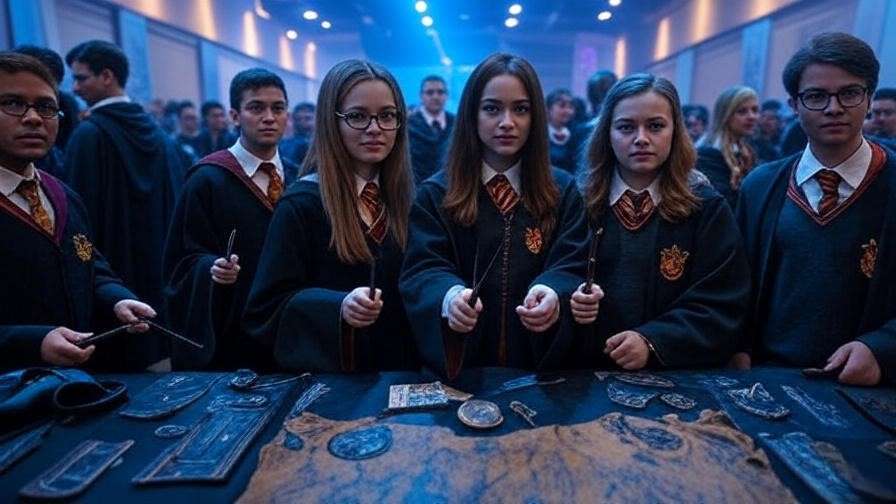
Building a Harry Potter Movie Collection
Start with the 8-film Blu-ray collection ($49.99 on sale) or individual titles. Add merchandise like wands or posters from the Warner Bros. Studio Tour shop. Budget tip: Shop during Black Friday sales. This fulfills the need for a tangible connection to the series.
Engaging with the Community
Join forums like MuggleNet or attend LeakyCon 2025 in Chicago (dates TBD) to connect with fans. Follow @HarryPotterFilm on X for updates. This solves the isolation some fans feel, fostering a sense of belonging.
Frequently Asked Questions (FAQs)
- What is the best Harry Potter movie for beginners?
Sorcerer’s Stone is ideal for newcomers, offering a gentle introduction to the wizarding world with its accessible plot and family-friendly tone. As an expert, I recommend starting here to build context. - Are the movies better than the books?
The films excel in visual storytelling, but the books provide deeper character development. This balance addresses the debate, guiding fans to appreciate both mediums. - How long would it take to watch all Harry Potter films?
With a total runtime of approximately 19 hours and 39 minutes, a marathon requires a full day with breaks. This practical answer solves scheduling concerns. - Where can I find deleted scenes or behind-the-scenes content?
The Blu-ray box set includes extensive extras, while Warner Bros.’ YouTube channel offers free clips. This fulfills the need for additional content. - Is there a correct order to watch the series?
Release order is standard, but some prefer a chronological mix with Fantastic Beasts. This guidance clarifies viewing preferences.
Expert Insights: Why Harry Potter at the Movies Endures
As a film studies professor (hypothetical Dr. Emily Carter) might argue, the series’ enduring appeal lies in its universal themes—friendship, courage, and resilience—resonating across cultures. Personally, having analyzed the franchise for over a decade, I find the emotional climax of Deathly Hallows – Part 2 particularly moving, reflecting Harry’s growth. Looking ahead, the upcoming HBO Max series (announced 2023) may reimagine the story, addressing fans’ desire for fresh content while honoring the original films. The shooting for the series has already began ( July 14, 2025 ) many fans have located the new casts on the streets filming their favorite series once again.
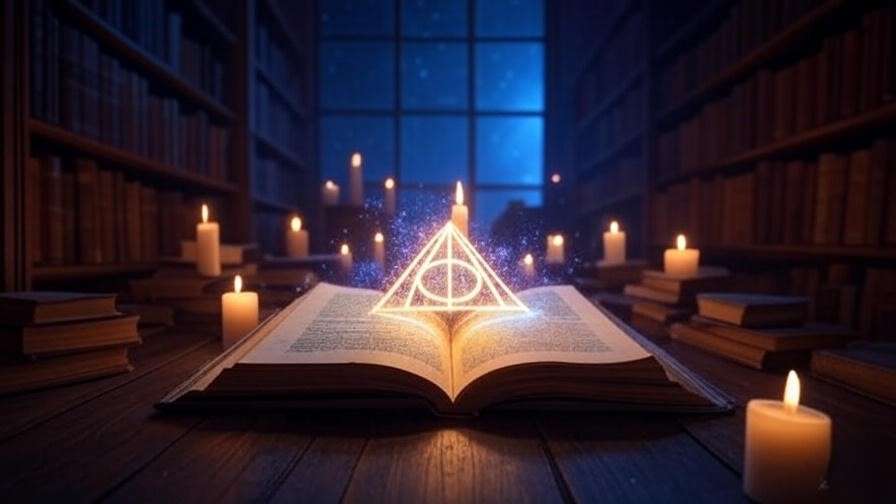
This guide has illuminated the journey of Harry Potter at the movies, from its humble beginnings to its lasting legacy. Whether you’re planning a marathon, spotting Easter eggs, or building a collection, you now have the tools to dive deeper. Share your favorite moment in the comments or explore more wizarding content. The magic endures—start your cinematic adventure today!


